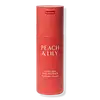What's inside
What's inside
 Key Ingredients
Key Ingredients

 Benefits
Benefits

 Concerns
Concerns

 Ingredients Side-by-side
Ingredients Side-by-side

Zea Mays Starch
AbsorbentMicrocrystalline Cellulose
AbsorbentSodium Cocoyl Isethionate
CleansingSodium Lauroyl Glutamate
Diglycerin
HumectantOryza Sativa Bran Extract
Skin ConditioningAspergillus/Rice Ferment Filtrate
Skin ConditioningPapain
Skin ConditioningPrunus Mume Fruit Extract
HumectantVitis Vinifera Fruit Extract
Skin ConditioningCarica Papaya Fruit Extract
Skin ConditioningPyrus Malus Fruit Extract
Skin ConditioningSalicylic Acid
MaskingCamellia Sinensis Leaf Extract
AntimicrobialGlycerin
HumectantAngelica Acutiloba Root Extract
Skin ConditioningAllantoin
Skin ConditioningVigna Radiata Seed Extract
Skin ConditioningMoringa Oleifera Seed Extract
Skin ConditioningPanax Ginseng Root Extract
EmollientMaltodextrin
AbsorbentWater
Skin ConditioningButylene Glycol
Humectant1,2-Hexanediol
Skin ConditioningEthylhexylglycerin
Skin ConditioningCaprylyl Glycol
EmollientZea Mays Starch, Microcrystalline Cellulose, Sodium Cocoyl Isethionate, Sodium Lauroyl Glutamate, Diglycerin, Oryza Sativa Bran Extract, Aspergillus/Rice Ferment Filtrate, Papain, Prunus Mume Fruit Extract, Vitis Vinifera Fruit Extract, Carica Papaya Fruit Extract, Pyrus Malus Fruit Extract, Salicylic Acid, Camellia Sinensis Leaf Extract, Glycerin, Angelica Acutiloba Root Extract, Allantoin, Vigna Radiata Seed Extract, Moringa Oleifera Seed Extract, Panax Ginseng Root Extract, Maltodextrin, Water, Butylene Glycol, 1,2-Hexanediol, Ethylhexylglycerin, Caprylyl Glycol
Zea Mays Starch
AbsorbentSodium Lauroyl Glutamate
Sodium Cocoyl Isethionate
CleansingCoconut Acid
CleansingWater
Skin ConditioningButylene Glycol
HumectantSodium Isethionate
CleansingSorbitol
HumectantSodium Chloride
MaskingCitric Acid
BufferingAllantoin
Skin ConditioningBetaine
HumectantPapain
Skin ConditioningIsopropyl Palmitate
EmollientGlucose
HumectantDisodium EDTA
Avena Sativa Meal Extract
SoothingPollen Extract
EmollientCamellia Sinensis Leaf Extract
AntimicrobialOpuntia Ficus-Indica Stem Extract
Skin ConditioningHydrolyzed Collagen
EmollientAscorbyl Palmitate
AntioxidantHouttuynia Cordata Extract
Skin ConditioningAsparagus Officinalis Stem Extract
Skin ConditioningZea Mays Starch, Sodium Lauroyl Glutamate, Sodium Cocoyl Isethionate, Coconut Acid, Water, Butylene Glycol, Sodium Isethionate, Sorbitol, Sodium Chloride, Citric Acid, Allantoin, Betaine, Papain, Isopropyl Palmitate, Glucose, Disodium EDTA, Avena Sativa Meal Extract, Pollen Extract, Camellia Sinensis Leaf Extract, Opuntia Ficus-Indica Stem Extract, Hydrolyzed Collagen, Ascorbyl Palmitate, Houttuynia Cordata Extract, Asparagus Officinalis Stem Extract
 Reviews
Reviews

Ingredients Explained
These ingredients are found in both products.
Ingredients higher up in an ingredient list are typically present in a larger amount.
Allantoin is a soothing ingredient known for its protective and moisturizingg properties. Because of this, it is often added to products with strong active ingredients.
Studies show higher concentrations of this ingredient can promote wound healing.
Though it can be derived from the comfrey plant, allantoin is produced synthetically for cosmetic products to ensure purity.
Learn more about AllantoinButylene Glycol (or BG) is used within cosmetic products for a few different reasons:
Overall, Butylene Glycol is a safe and well-rounded ingredient that works well with other ingredients.
Though this ingredient works well with most skin types, some people with sensitive skin may experience a reaction such as allergic rashes, closed comedones, or itchiness.
Learn more about Butylene GlycolCamellia Sinensis Leaf Extract is derived from the leaves of the tea plant. Black tea, green tea, and oolong tea are all harvested from this plant.
This ingredient has many skin benefits:
This ingredient contains polyphenols, a strong antioxidant. Antioxidants help fight off molecules that damage skin cells.
On top of that, the antioxidants in green tea neutralize free-radicals from the sun. This gives the skin some extra UV protection, but should not replace sunscreen.
Many components of tea have anti-inflammatory properties.
Polyphenols and L-theanine help soothe the skin and reduce irritation. The caffeine in Camellia Sinensis Leaf Extract helps calm inflamed blood vessels.
Other compounds found in tea include: Vitamin Bs, linoleic acid, magnesium, calcium, iron, and zinc.
Research has shown both drinking Camellia Sinensis Leaf Tea and applying it to the skin can help boost skin elasticity and hydration. Studies also show using tea extract may reduce sebum, or oil, production.
Learn more about Camellia Sinensis Leaf ExtractPapain is an enzyme found naturally in the papaya plant's leaves, fruit, and roots. It has antimicrobial, soothing, and wound healing properties.
Glycine and Vitamin A are naturally found in papain.
While papain is often touted as skin-lightening, further studies are needed to prove this. However, papain has been shown to help soothe acne-inflammation.
Papain belongs to a class of enzymes called proteolytic enzymes. These enzymes break down peptides and amino acids.
Some studies found papain to be a potential skin sensitizer and allergen. Those with latex allergies might also be allergic to papaya.
Learn more about PapainSodium cocoyl isethionate is a natural ingredient from coconut oil. It is an ultra gentle cleanser that gives a nice foam without drying the skin or impacting the skin barrier.
The amount of foam created depends on the amount of sodium cocoyl isethionate used in the product.
This ingredient also helps improve the spreadability of a product.
Learn more about Sodium Cocoyl IsethionateSodium Lauroyl Glutamate is the sodium salt from the lauric acid of glutamic acid.
It is a surfactant and helps cleanse the skin. Surfactants gather oil, dirt, and other pollutants from your skin so they may be washed away easily.
Water. It's the most common cosmetic ingredient of all. You'll usually see it at the top of ingredient lists, meaning that it makes up the largest part of the product.
So why is it so popular? Water most often acts as a solvent - this means that it helps dissolve other ingredients into the formulation.
You'll also recognize water as that liquid we all need to stay alive. If you see this, drink a glass of water. Stay hydrated!
Learn more about WaterZea Mays Starch is starch made from corn. You might know this as cornstarch . It is used to thicken a product. It can replace talc as an absorbent.
The pH of cornstarch is 5.92.
Cornstarch is a common food ingredient used to thicken soups or to make corn syrup.
Learn more about Zea Mays Starch